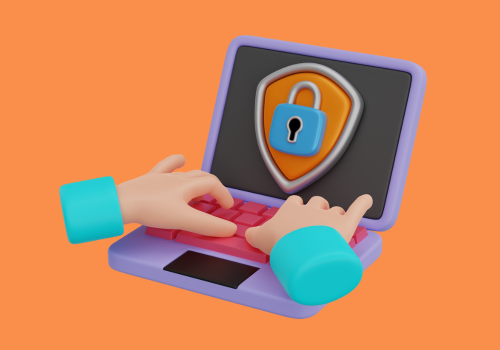Accessibility of government information and resources is a fundamental principle all cities and their constituents value. Unfortunately, for those with disabilities, access to information and resources has become increasingly more difficult as new technologies allow for more content to be available to the public—but not always in a format that individuals with disabilities can easily view or obtain.
In recent years, several government entities have faced lawsuits for not providing access to the information they have available on their websites in a form that individuals with disabilities can access. While technology and legal standards are ever-evolving, a city can take certain steps to not only reduce the risk of claims but, more importantly, to better serve its citizens.
5 Steps to provide access
The following are five suggested steps any city can implement now to provide reasonable access to web-based public services as required by Title II of the Americans with Disabilities Act (ADA):
- Step 1. Develop an internal plan/policy
- Step 2. Provide the public with procedures to access information
- Step 3. Try to make the changes that have the most impact now
- Step 4. Make sure employment opportunities are accessible
- Step 5. Raise your standards and add a statement now
Step 1. Develop an internal plan/policy
First, start with a self-evaluation. Does the city have an internal policy for handling requests for accessibility? A policy that’s readily available to the public? How accessible is your website to individuals with disabilities?
Next, develop an internal plan for how the city will respond to requests from individuals with disabilities. If you already have an access plan or policy, now would be a good time to review and update it. As part of any plan, staff should be trained on how to respond to access questions and requests. Consider including handling access requests in a specific position’s job duties, and also making sure you’ve designated a back-up position to handle such requests. For example, if your city has a clerk and a deputy clerk, include this as a duty in both job descriptions.
Other tips:
- If a request comes in via phone, email, or in person, follow data practices law for the process and stress an interactive dialog.
- Document the date, time, and substance of the request, noting the city’s interest in working with the requester.
- Get information from the requester about the alternative format they need.
- Note how the requested information will be provided (e.g., mail, in person).
- Document progress, any problems, and the final response.
- Establish a grievance procedure for resolving complaints or concerns regarding individual access requests.
Step 2. Provide the public with procedures to access information
On the city’s website, include the procedure individuals should use if they find that information on your website is not accessible to them.
Sample from the City of Blaine, Minnesota:
“If you use assistive technology (such as a Braille reader, a screen reader, or TTY) and the format of any material on this website interferes with your ability to access information, please contact us. To enable us to respond in a manner most helpful to you, please indicate the nature of your accessibility problem, the preferred format in which to receive the material, the web address of the requested material, and your contact information. Users who need accessibility assistance can also contact us by phone through the Federal Information Relay Service at [phone number] for TTY/Voice communication.”
Include the contact information for the staff member who is responsible for processing these requests.
Step 3. Try to make the changes that have the most impact now
The United State Department of Justice has created a list of specific recommendations for changes in websites based on the complaints they see most frequently. Check your city’s website to see if the city can make some of the changes now.
Basic changes:
- All photos or graphics should be accompanied by a text description of the image.
- Website design should avoid specifying colors and font sizes.
- Videos and other multimedia should have accessible features such as closed captioning.
- Documents must be posted in an accessible format. Electronic documents in formats such as Word, PDF, Excel, and PowerPoint may be accessible if they are created and maintained properly to be compatible with screen readers. Electronic documents that are accessible will have:
- A logical structure and reading order.
- Alternate text descriptions for figures, form fields, and links.
- Navigational aids (e.g., links, bookmarks, table of contents).
- Security that doesn’t interfere with assistive technology.
- Fonts that allow characters to be extracted to text.
It is common for electronic documents on websites to be posted in a PDF format. However, frequently the PDF documents are not created in an accessible format. Several resources are available to ensure that electronic documents in popular formats, such as Word, PDF, Excel, and PowerPoint, are created and maintained in a format that’s accessible to people with disabilities. Use the following resources to determine if the documents on your city’s website are accessible.
Resources:
- Learn how to create accessible documents from the U.S. Section 508 website
- Learn how to create accessible PDF documents from Adobe’s website
More complex changes:
- Include a “skip navigation” link at the top of web pages that allows people who use screen readers to ignore navigation links and skip directly to web page content.
- Minimize blinking, flashing, or other distracting features. If they must be included, ensure that moving, blinking, or auto-updating objects or pages may be paused or stopped.
- Design online forms to include descriptive HTML tags that provide people with disabilities the information they need to complete and submit the forms.
- Include visual notification and transcripts if sounds automatically play.
- Provide a second, static copy of pages that are auto-refreshing or that require a timed response.
- Use titles, context, and other heading structures to help users navigate complex pages or elements (such as web pages that use frames).
For more information, see
- ADA Best Practices Tool Kit for State and Local Governments, Chapter 5
- ADA Digital Toolkit from Minnesota Council on Disability
- Website Accessibility Tips from Minnesota Council on Disability
Step 4. Make sure employment opportunities are accessible
Review online application procedures to identify possible barriers to employment for people with disabilities. This will help a city attract the broadest pool of qualified candidates and reduce the likelihood of a claim that your website or job applications process was not fully accessible to people with disabilities, such as those who are blind or have low vision, are deaf or hard of hearing, or have physical disabilities affecting manual dexterity (such as limited ability to use a mouse).
Whatever process you use for advertising and accepting applications, consider what changes can be made to facilitate a more accessible process. If using an online application process, consider adopting standards that conform with the Web Content Accessibility Guidelines 2.0 (see 5 below).
Step 5. Raise your standards and add a statement now
While the Americans with Disabilities Act does not yet specify a standard for local government websites or electronic materials, the law does require that programs and services are readily accessible to and usable by individuals with disabilities. The tech industry seems to agree that the Web Content Accessibility Guidelines (WCAG) 2.0 level AA standard is the best available to satisfy this requirement. If your city has any plans to update or alter its website, you should consider these standards as part of the planning phase and discuss them with your web developer.
If your city is not able to make changes just now, consider adding a statement to your website about your plans for the future. For example: “We are in the process of assessing the accessibility of the city’s website and its electronic documents to establish a plan to comply with and follow best practices set forth in website accessibility standards under Section 508 of the federal Workforce Rehabilitation Act and the Web Content Accessibility Guidelines (WCAG) 2.0 A and AA.”
Of course, even if compliance with WCAG is not currently possible, a city should take into account steps 1-4 above in developing or updating its website accessibility plan.




